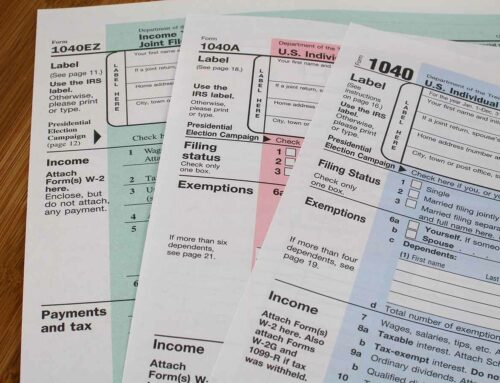Filing Status
The first thing you need to determine in preparing your 1040 is what your filling status is. What your marital status is on the last day of the year has the most effect on which options are available to you.
The five classification of filing status are:
Single
Married Filing Jointly
Married Filing Separately
Head of Household
Qualifying Widow/Widower With Dependent Child
Single (S)
A person who is not married on the last day of the year is considered single for the entire year even if their divorce was final on December 31. If they have a dependent, they may be to file as Head of Household.
Married Filing Jointly (MFJ)
A person is in a legal marital relationship on the last day of the year is considered married for the entire year even if they got married on December 31. Both parties must sign a Married Filing Jointly return. A married person may file Married Filing Jointly or Married Filing Separately.
Married Filing Separately (MFS)
A person who is considered legally married may chose to file separately from their spouse. There are some tax benefits that are not available to someone who files MFS that are available to couples that file MFJ.
The primary reasons someone may decide to file MFS are:
. One spouse does not want to file.
. Suspicion that the MFJ return is not accurate
. Not wanting to be liable for the other spouse’s taxes.
. To get a refund if the other spouse has an outstanding tax liability.
. If the couple is considering divorce and want to separate their finances.
Both taxpayers are required to itemize their deductions if the first to file itemizes. Both taxpayers will have to report the other taxpayer’s name and SSN on their return.
If the taxpayers cannot agree on who will get to claim a dependent, the IRS has rules that will determine who gets to.
There are several other tax credits and/or tax benefits that are available to couples filing MFJ that are not available to those filing MFS.
Head of Household (HH)
The requirements for Head of Household status are:
- The taxpayer must me single or considered single. To be married and considered single the taxpayer did not live with their spouse during the last six months of the year or is legally separated under a divorce or separate maintenance decree by the last day of the tax year.
- They must pay more than one-half of the support and housing for a qualifying person.
- If the taxpayer is married to a nonresident alien, they must elect to not treat the spouse as a resident alien.


Leave A Comment